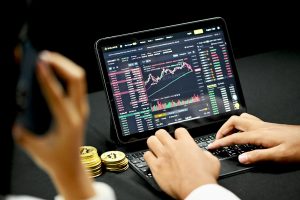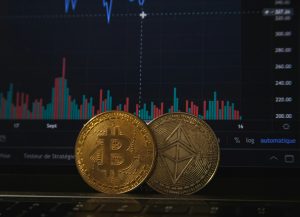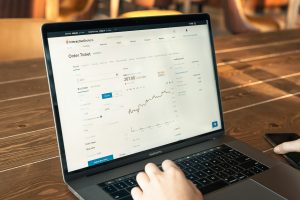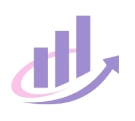If you are one of those traders who have difficulty fathom forex trading, this article is for you.
Forex trading comes with both risks and profits, which is why it is essential for beginners to learn the nuances of this market.
In this article, we will get you through a detailed guide about Forex Trading for beginners, tips, and basic principles. By reading till the end, you will learn everything to get started in forex trading. Without further ado, let’s get started.
What is Forex Trading?
Forex (foreign exchange market) is where different currencies such as EUR, USD, AUD, and more are traded. The market does not have any central marketplace, but trading is conducted electronically through OTC (over the counter).
The foreign exchange market operates 24 hours a day and five days a week (Saturday and Sunday closed) in different financial centers in different cities such as New York, London, Paris, Hong Kong, Sydney, and Tokyo.
Moreover, forex trading is a huge market to dive in. According to IMARCE Group, the forex market grew by $753.2 billion in 2022 and is expected to reach $1,143.2 billion by 2028. It has become the most liquid market globally.
The traders aim to make profits by buying or selling the currency pair to make a profit by speculating the market.
Step-by-Step Guide for Forex Trading
1)Find a Reliable Broker
One of the primary steps as a trader is to find a trustworthy broker for your forex trading. It is an essential part of your journey. So, look for a broker that is regulated by different financial authorities, such as:
- NFA (National Futures Association).
- FCA (Financial Conduct Authority).
- CFTC (Commodity Futures Trading Commission)
- MAS (Monetary Authority of Singapore)
- ASIC (Australian Securities and Investments Commissions)
Furthermore, take a look at the commission, spreads, and fees of the forex broker before choosing it. Most of the brokerage companies do not charge fees. Instead, they cover it with large spreads. In addition, learn the different types of accounts offered by the traders and the features such as leverage and margin.
2)Open an Account (Demo)
For beginners, it is indispensable to learn about the platform and test its features. After selecting the right broker company, open a demo account on the platform. It will give you the privilege to test all the features of the broker company. With the demo account, you can also learn and execute the different strategies.
It also allows you to get a good grip on the forex market and learn about different currency pairs, such as EUR/USD, AUD/USD, and more. Practicing on a demo account will also help you with technical analysis and helps to reduce errors during live trading. You can learn about your weakness and fix them before you start trading on a live account.
3)Start with Small Investments
It is advisable to start your first trade with a small investment. As mentioned, forex trading comes with a lot of risks. So, it is important for beginners traders to start with a small deposit. While you are still learning, this will assist you in gaining experience and reducing prospective losses. You can momentarily increase your investment as you gain self-assurance and accomplishment.
In addition, you can check out the minimum deposit required by the broker company, such as $5 or $10, and continue with that for weeks or months.
4) Educate about Forex Market
The forex is a huge market, and there are many things to learn about, such as spread, commission, pips, and more, which we will also discuss later in this article. Moreover, most broker companies have tutorials and guides on their website. Knowledge is essential for all traders, as it helps them deal with and overcome trading difficulties.
You can also reckon to read books and watch YouTube videos to learn about risk management, different trading strategies, and the basics of currency pairs.
5)Learn Different Strategies & Practice
Learning and practicing different trading strategies is important to gain more profit in forex trading. There are different types of strategies to learn such as:
Range Trading Strategy
In the Range trading strategy, the trader identifies the support and resistance level to place their traders. The traders buy near the support level and sell near the resistance level, getting profits from price movements.
Day Trading Strategy
In the day trading strategy, the traders open and close the traders on the same trading day. Furthermore, day traders aim to make profits from short-term price movements, typically within hours or a single session.
Trend Trading Strategy
It is one of the easiest and simple to learn strategies on the forex market. When the price of the currency pairs increases, it is called an upward trend, and the traders would enter in buy position. When the currency pair’s price decreases, it is called a downward trend, and the traders would enter into a sell position.
Position trading Strategy
Position trading strategy requires patience and long-term planning. In this strategy, the traders hold their trades for long periods of time, such as weeks, months, or even a year. The traders often ignore short-term price movement.
The forex market is quite dynamic, so it is important for beginner traders to adapt and learn these strategies. Keep an open mind, experiment with various trading strategies, and review your trades for patterns to help you become a better trader.
Basic Terminologies for Forex Trading
Let’s explore some of the crucial terminologies in forex trading which every trader must know:
Spread
In simple words, the spread refers to the difference between the bid and ask price. Suppose in EUR/USD, the USD is trading at an asking price of 130.40 and bid price of 130.44; the spread is 0.04, which equals four pips.
PIP
PIP (Percentage in Point) refers to the 4th decimal unit of a currency pair. For example, if the AUD/USD price moves from 1.205 to 1.206, it has moved one pip. It depends on the position and lot size of the trade.
Margin
Margin in forex trading is the initial funds that the traders require to open a trade in the market. It allows them to open larger trades and maintain a position in the market. Keep in mind that margin amplifies both profits and losses in forex. In addition, it is crucial for traders to monitor their margin levels.
Leverage
Leverage is the type of loan that is borrowed by the trader within a trading account. The main benefit of leverage is that a trader can open large trades with less capital. If the leverage is a 1:100 ratio, the trader can open a position worth $100,00 with a margin of only $1,000.
Currency Pair
Forex has over 50 currency pairs, and some of the common ones are EUR/USD, AUD/USD, GPB/USD, and more. It includes minor, major, and exotic currency pairs.
The first currency is known as a base currency, and the second currency is the quoted currency. For example, in EUR/USD, EUR is the base currency, and USD is the quoted currency.
Bid and Ask Price
When the trader is minded to buy a currency pair, it is called the Ask price. In contrast, when the trader is minded to sell a currency pair, it is called Bid price. The difference between them is called a Spread, as mentioned above.
Lot Size
The standard lot size equals 1000,000 units of the base currency; the others are mini and micro lot sizes. Mini has 10,000 units, while micro has 1,000 units.
Bullish & Bearish
It can be summed up into two major points:
- When the price of the currency is increasing, the market is bullish.
- When the price of the currency is declining, the market is bearish.
Pros and Cons of Forex Trading
Pros:
High Liquidity
As we all are acquainted that forex is a highly liquid market, it allows traders to enter and exit the market quickly without any slippage.
Offers Flexibility
Forex trading is available to every individual around the globe. It allows traders to participate in trading from anywhere in the world with just an internet connection and a device.
Trading Opportunities
It has many trading opportunities, allowing you to trade on currency pairs and cryptocurrencies, stocks, indices, and more.
Cons:
High Risks
The forex market comes with both profits and risks. The prices of the currency pairs are vulnerable to sharp swings, which are affected the economic events.
Complexity
The forex market can become very complex, especially if you are a beginner trader. So, developing a solid understanding of the market and technical analysis is essential.
Conclusion
Periodically, forex trading has become more advance and technical. It is vital for beginner traders to learn rudimentary steps and common forex terms. That’s what exactly we have described in the above article. By reading the above guide, you will be familiar with the forex market’s basic terms, how to trade effectively, and learn about different forex strategies.





